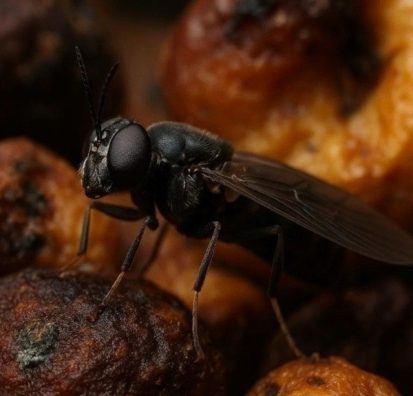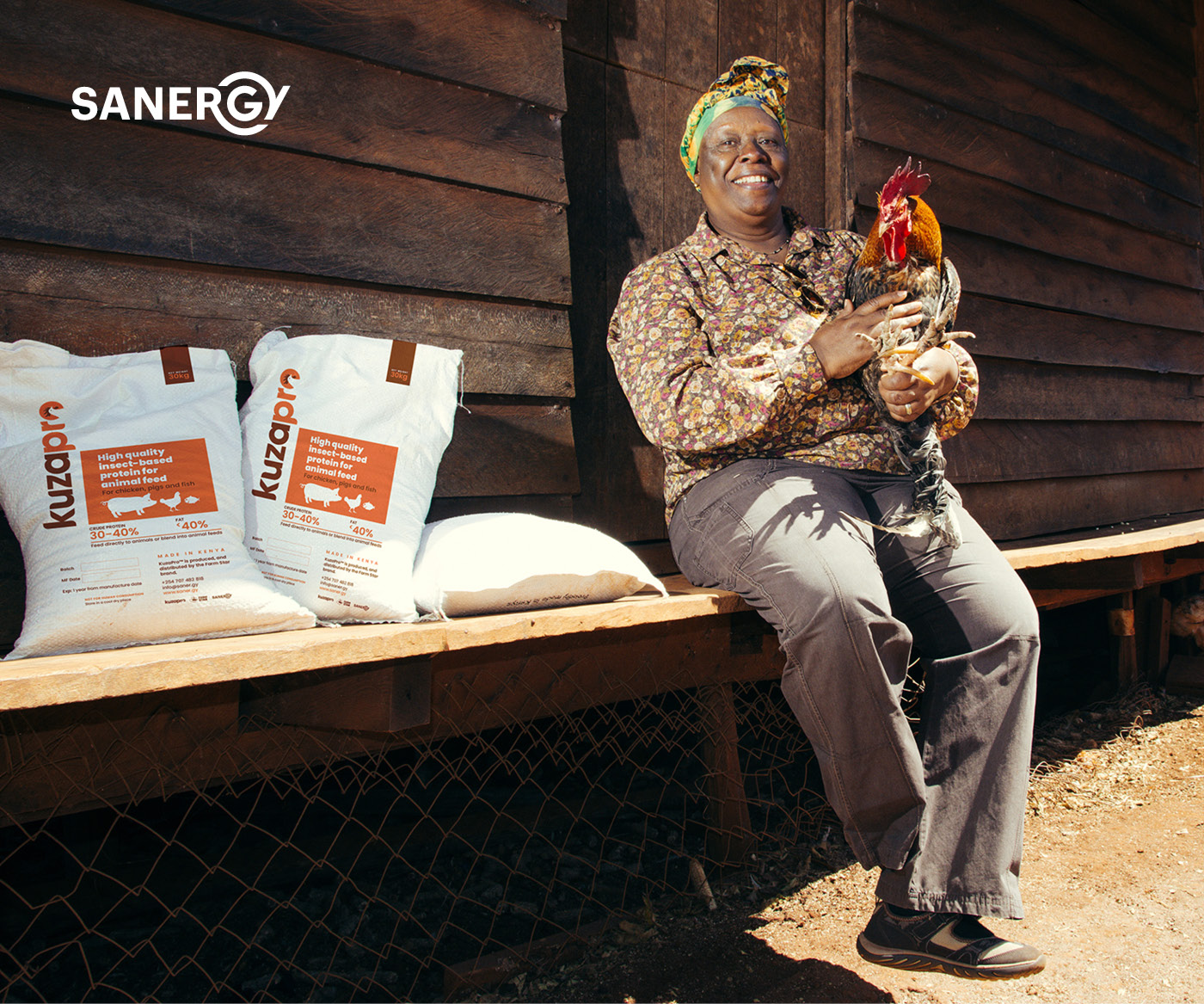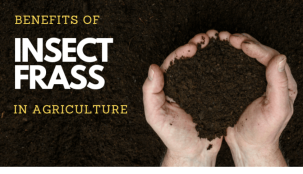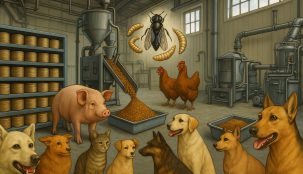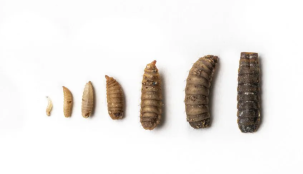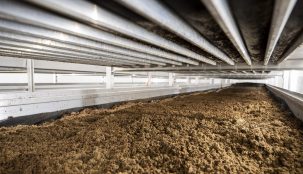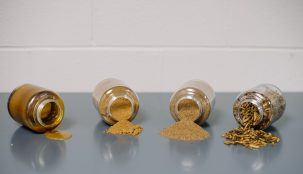Larval Motion for Industrial Sorting in BSF Protein Production
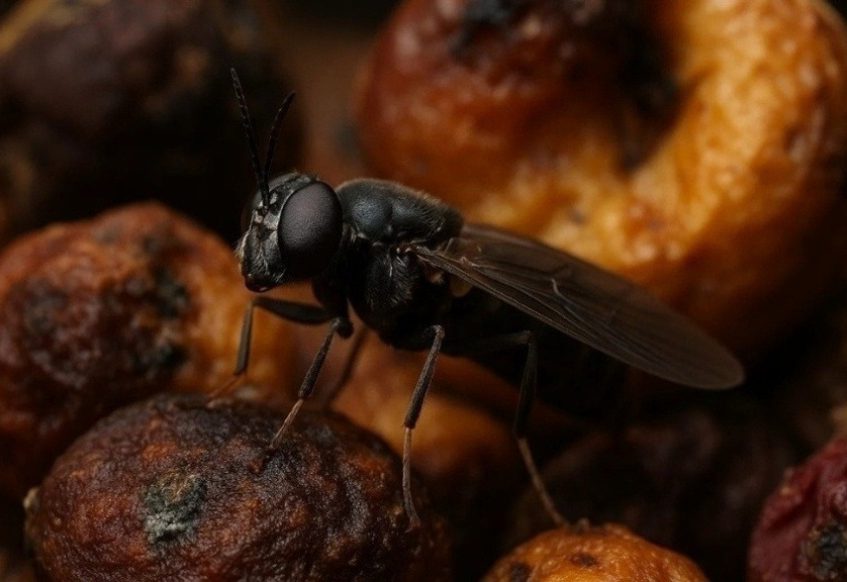
This study examines the biological development, waste decomposition efficiency, and nutritional value of Hermetia illucens (black soldier fly, BSF). Focus is on how different life stages affect movement behaviour, feeding efficiency, and potential applications in agriculture and waste management.
Developmental Stages, Locomotion, and Waste Decomposition Efficiency
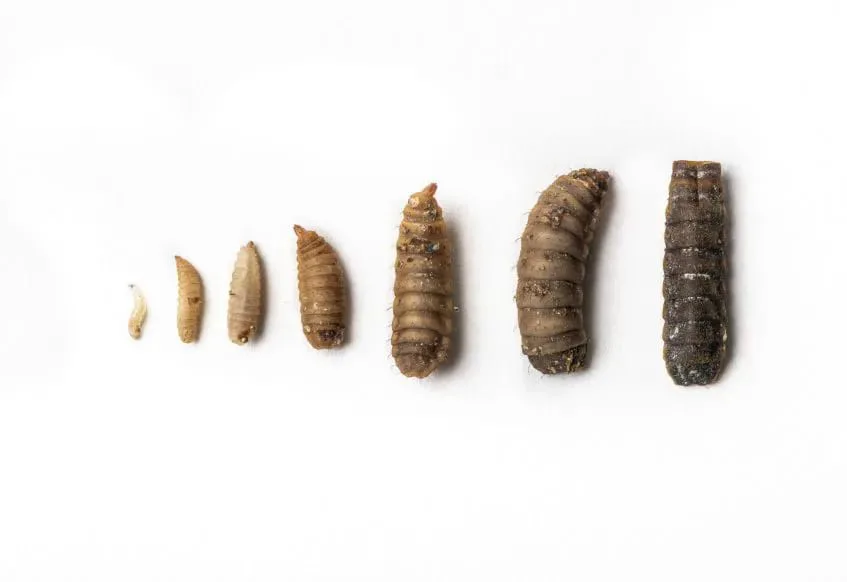
The study identifies five key developmental stages of H. illucens, each exhibiting distinct movement and behavioural traits that influence their role in bioconversion.
Egg Stage (0–4 days)
- illucens eggs are laid in clusters within organic waste substrates, often in cracks or small crevices. They remain immobile and require stable temperature and humidity levels for successful hatching. Eggs hatch into first-instar larvae after approximately four days.
Larval Stage (5–20 days)
This is the most active stage, characterized by intensive feeding and movement, making it the most effective for organic waste decomposition.
Locomotion: Larvae exhibit peristaltic crawling, a rhythmic contraction of body segments that enables movement through dense organic material.
Behavioural changes: Early instar larvae display slow, exploratory movements, spreading through the substrate to locate optimal feeding zones. Mid-to-late instar larvae become highly mobile and aggressive feeders, often clustering at nutrient-rich spots. Late-instar larvae tend to burrow deeply to regulate moisture and temperature exposure.
Feeding efficiency: Waste consumption rates peak in the late larval stage when metabolic activity is highest. The larvae efficiently break down organic material, reducing overall waste volume and converting it into high-protein biomass.
Prepupal Stage (20–25 days)
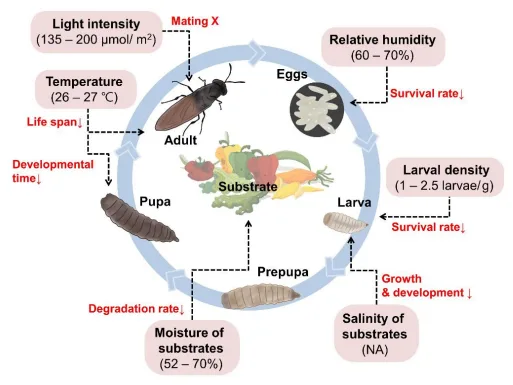
As larvae transition toward pupation, they undergo significant behavioural and locomotion changes.
Movement patterns shift dramatically: Larvae exhibit negative phototaxis, moving away from light to find sheltered environments. They enter the wandering phase, characterized by short, rapid bursts of movement, as they actively search for dry pupation sites.
Cessation of feeding: Unlike earlier stages, prepupae stop feeding, relying on stored nutrients to support metamorphosis.
Industrial relevance: This stage is particularly valuable for extraction processes, as it contains peak levels of lipids and proteins useful for animal feed and biofuel production.
Pupal Stage (25+ days)
The prepupa encloses itself in a protective exoskeleton, significantly reducing movement. Energy is primarily directed toward metamorphosis, with little to no interaction with the external environment. This stage is crucial for sustainable insect farming, as pupal biomass can be harvested for multiple industrial uses.
Adult Stage (Flies)
Upon emergence, adult H. illucens are highly mobile and engage in rapid flight to locate mates and suitable oviposition sites. Unlike other fly species, BSF adults do not feed, relying entirely on stored larval nutrients to survive. Their lifespan is short (5–8 days), during which they focus on reproduction.
Ecological benefit: Since adults do not consume food, they pose no risk as agricultural pests, making them ideal for controlled bioconversion systems.
Nutritional Composition Across Life Stages
As H. illucens progresses through its life cycle, its nutritional profile changes:
- Early instar larvae contain less fat and protein but are highly active feeders.
- Late instar larvae have the highest protein (~45% dry weight) and lipid (~35%) content, making them ideal for use in animal feed.
- Prepupae store energy in the form of chitin, which reduces digestibility but increases potential industrial applications (e.g., bioplastics and pharmaceuticals).
Waste Management and Industrial Applications
Young and mid-stage larvae are best suited for organic waste processing due to their intense movement and feeding behaviour.
Older larvae and prepupae are more valuable for protein and lipid extraction in animal feed and biofuel production.
Potential Risks and Challenges
The study also highlights concerns such as:
- Heavy metal accumulation: Older larvae may absorb contaminants from waste substrates.
- Regulatory concerns: The need for standardized guidelines for BSFL use in agriculture and industry.
Conclusion
The study emphasizes that the movement and locomotion patterns of Hermetia illucens directly influence their efficiency in waste decomposition and protein production. Further research is necessary to optimize the use of different larval stages for industrial and agricultural applications.
For more information about:
- Insect Bioconversion of Waste, please contact us at the Insect school. https://www.insectschool.com/
- Turnkey Insect Farms – https://www.insectengineers.com/bsfturnkey/production
- If you would like to book BSF industry keynote speaker Bob Holtermans for your event – https://www.insectengineers.com/about-us/speaker-bobholtermans
